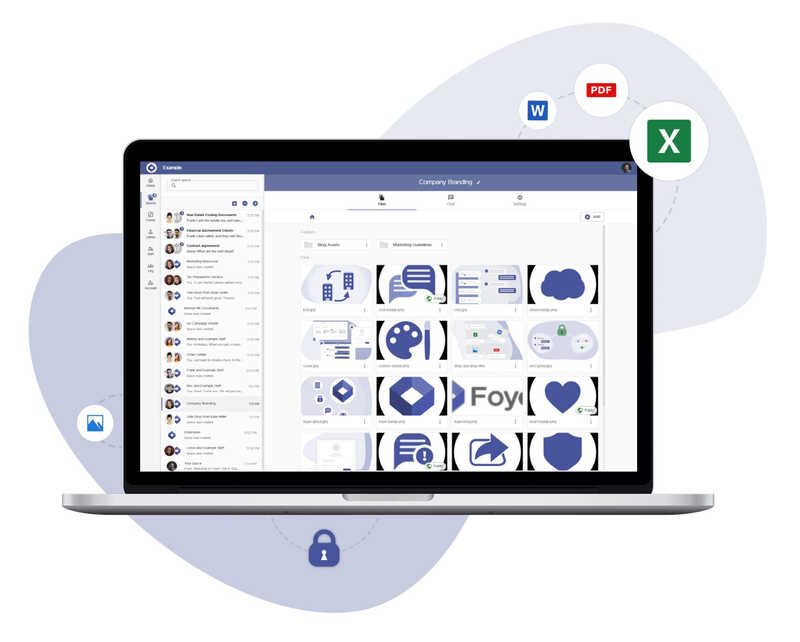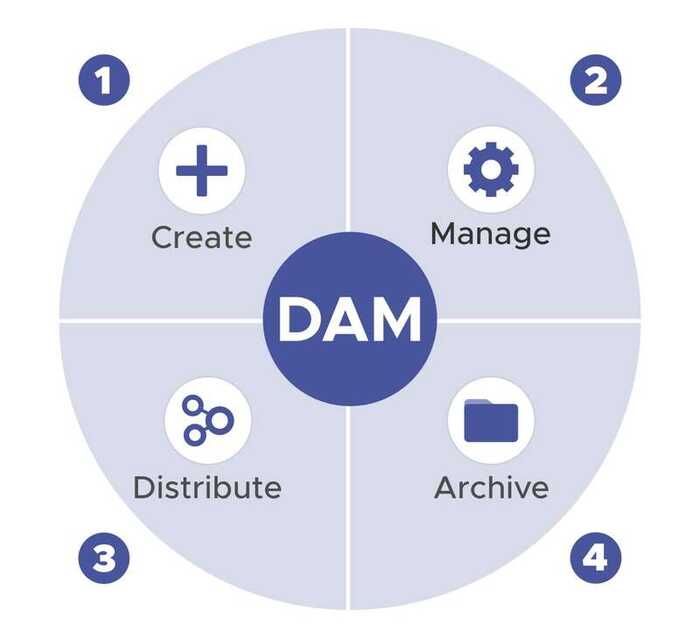Digital Asset Management Workflow Guide (2025 Edition)


Digital assets sit at the heart of every modern brand story—from social video to pitch deck slides and in app icons. Yet many teams still treat digital asset management (DAM)—the backbone of any digital asset workflow or broader asset lifecycle management strategy—as nothing more than a glorified folder tree. The result? Content chaos: duplicated files, inconsistent branding, stalled approvals, and campaigns that miss critical windows.
A digital asset management workflow is the structured sequence of people, processes, and technology that shepherds each asset from creation to archival. When that workflow is intentional—and infused with automation, clear governance, and data driven iteration—it becomes a competitive edge. This guide unpacks the what, why, and how of building a high performance DAM workflow in 2025, complete with actionable templates and real world tactics you can deploy today.
What Is a Digital Asset Management Workflow?
A digital asset management workflow is more than file storage. It is a repeatable, end to end process that:
- Ingests new assets, whether shot in house, generated by AI, or supplied by partners.
- Classifies and enriches assets with metadata, rights information, and brand context.
- Routes content through stakeholders for reviews, feedback, and approvals.
- Publishes assets to the right channels at the right time—automatically, when possible.
- Monitors usage, performance, and compliance.
- Archives or retires assets when their lifecycle ends.
When you design each stage intentionally, the DAM becomes a living system that accelerates creativity instead of bottle-necking it.
Why DAM Workflow Matters More Than Ever
- Content velocity is skyrocketing: Global content output adds zettabytes of information every year, making ad hoc asset management (and any DAM workflow) un-scalable.
- Brand consistency drives revenue: Consistent branding can lift revenue
- AI thrives on clean data: Generative AI tools rely on well-tagged, rights cleared assets to avoid hallucinations or compliance missteps.
- Engagement rewards speed: Audiences expect localized, formatted content in real time across social, mobile, web, and AR surfaces.
- Regulatory scrutiny is rising: Industries that come under privacy regulations such as GDPR face stiff penalties for using processes do not meet regulatory requirements.
A robust digital asset management workflow is table stakes for meeting these demands at scale.
Stages of a Modern DAM Workflow
- Plan & Brief
• Define goals, target audience, and distribution channels.
• Assign SME and creative owners. - Create & Capture
• Produce original content: photos, video, motion graphics, 3D renders, AI generated art.
• Establish version control from Day 0. - Ingest & Enrich
• Upload to DAM with automated checksum verification.
• Apply controlled vocabulary, AI tags, usage rights, and expiration dates. - Review & Approve
• Stakeholders annotate directly in the DAM.
• Parallel approvals accelerate sign off without version sprawl. - Distribute & Activate
• Publish to CMS, PIM, social schedulers, or CDN with one click.
• Use dynamic transformations for channel specific renditions. - Measure & Optimize
• Track asset engagement, reuse rate, and ROI.
• Feed insights back into planning and metadata taxonomy. - Archive & Retire
• Move superseded assets to cold storage.
• Automatically alert owners before license expiry.
The Concepts of an Effective Digital Asset Management (DAM) Workflow

- Create — The lifecycle starts here: capturing, producing, or acquiring assets such as images, videos, documents, audio, or 3D files. Clear brand guidelines, technical specifications, and creative briefs established at this stage safeguard consistency and quality right from the outset.
- Manage — Once an asset exists, it must be organized and secured. Robust metadata tagging, descriptive keywords, version control, and a well structured storage hierarchy keep files instantly searchable, protected from loss, and fully traceable for auditing.
- Distribute — Approved assets flow to teammates, clients, or external partners. Real time collaboration inside the DAM accelerates feedback cycles, while granular permissions protect sensitive content. Monitoring views, downloads, and engagement metrics reveals which assets drive results and guides future content investment.
- Archive — Assets that have fulfilled their purpose are archived or retired. Long term preservation safeguards historical value and legal compliance, while removing obsolete files frees storage and keeps the active library lean and efficient.
10 Best Practices for DAM Workflow Success
- Start with the End in Mind
Map backward from distribution channels to define metadata, file formats, and approval checkpoints. - Design a Taxonomy, Then Test It
Pilot your folder structure and tagging schema with real users before full rollout. - Automate Low Value Tasks
Use AI or integrate with your tools' APIs for auto tagging and smart cropping; reserve human effort for creative judgment. - Implement Version Control Naming Conventions
e.g.,PROJECT_CLIENT_YYYYMMDD_v01.psdkeeps history crystal clear. - Standardize Templates and Creative Briefs
Uniform briefs stabilize quality and accelerate onboarding for freelancers. - Embed Compliance Early
Rights metadata and auto expiry rules avert costly takedowns. - Leverage Dynamic Asset Transformation
Generate on the fly renditions (WebP, AVIF, portrait, landscape) at publish time. - Champion Training & Change Management
Bite size tutorials and office hours beat monolithic “launch day” trainings. - Monitor KPIs Religiously
Track average approval time, asset reuse ratio, first time right rate, and cost per asset. - Iterate Quarterly
Hold retrospective workshops to refine bottlenecks and update governance.
Step by Step: Building Your DAM Workflow
- Audit the Current State
Interview stakeholders, map existing processes, and quantify pain points (e.g., average asset search time). - Define Objectives & KPIs
Example: Cut time to publish by 30% within six months. - Design the Target Workflow
Use swimlanes to outline stages, owners, and RACI. - Select or Configure DAM Technology
Match features (AI tagging, API access, CDN) to workflow requirements. - Develop Governance & Taxonomy
Establish naming conventions, metadata fields, and permission roles. - Pilot with a High Visibility Campaign
Start small to capture quick wins and refine before scaling. - Roll Out & Train
Provide self service knowledge base, live workshops, and champion networks. - Measure & Optimize
Benchmark KPIs on Day 30, 90, and 180 to inform iterative tweaks.
Workflow Template (Copy & Adapt)
| Stage | Owner | Entry Criteria | Tasks | Exit Criteria |
|---|---|---|---|---|
Plan | Marketing Lead | Approved brief | Draft creative brief; assign budget | Brief signed off in DAM |
Create | Designer | Signed brief | Design versions A/B | Asset files uploaded to DAM |
Review | Brand & Legal | Uploaded asset | Annotate, request changes | "Approved" status applied |
Activate | Digital Team | Approved asset | Publish via CMS API | Live URL stored in DAM |
Measure | Marketing Ops | Live asset | Collect analytics | Report logged |
Archive | DAM Admin | Asset end of life | Move to cold storage | Archive confirmation |
Emerging Trends Shaping DAM Workflows in 2025
- AI Driven Content Assembly: Smart templates pull copy and images into channel ready assets in seconds.
- Predictive Rights Management: Machine learning flags likely license conflicts before deployment.
- Asset Level Analytics Dashboards: Real time dashboards surface top performing variants by audience segment.
- Composable Martech Stacks: Headless DAM architectures integrate via GraphQL for bespoke experiences.
- Voice & AR Asset Packages: Metadata now accounts for speech synthesis files and 3D object variants.
- Sustainability Metrics: Eco scores show the carbon footprint of storage tiers and delivery networks.
Conclusion
A streamlined digital asset management workflow is no longer optional—it’s foundational to executing agile marketing strategies, maintaining brand integrity, and capitalizing on every creative investment. By implementing the concepts and best practices outlined above, you’ll shorten production cycles, maximize asset value, and future proof your content operations for the next wave of channels and technologies.


